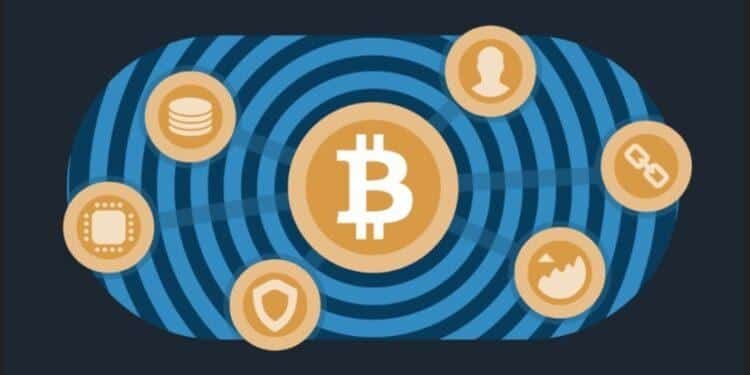Miner Token in Turmoil : Miner, an ERC-X token issued under experimental standards, experienced an astonishing 88% depreciation within just hours due to an exploitable flaw in its smart contract that allowed users to exploit a doubler glitch and manipulate their token balances.
Market Unrest Triggered by Smart Contract Vulnerabilities
Market unrest caused by smart contract vulnerabilities has sent shockwaves through the cryptocurrency community, prompting Miner’s value to decline in response to an exploited loophole within its smart contract framework. Users took advantage of it to artificially increase token holdings resulting in significant disruptions of operations and diminishing investor trust on Miner.
Miner’s development team responded swiftly and decisively to this crisis by acknowledging its seriousness and quickly announcing plans to mitigate damage. Part of their proactive plan includes conducting an in-depth and exhaustive audit of smart contract codebase to detect any weaknesses or loopholes; this audit serves as a crucial step towards rebuilding trust within Miner ecosystem by strengthening security against future exploits.

Miner’s announcement and commitment to address its vulnerability was met with cautious optimism by cryptocurrency enthusiasts, with various stakeholders following its progress in solving it. Successful implementation of corrective measures is vital not only for immediate stability and credibility but also for long-term viability and credibility in an ever-competitive financial landscape.
As Miner faces this challenging period, this incident serves as a stark reminder of the inherent risks associated with smart contract technology and of the significance of stringent security measures in protecting digital assets and maintaining investor trust. Miner’s efforts to fortify its defenses against vulnerabilities will undoubtedly have far-reaching effects for cryptocurrency as a whole, helping shape decentralized finance solutions such as blockchain solutions in future developments.
ERC-X Standard: Merging Innovation and Caution
ERC-X marks an unprecedented advancement in Ethereum tokenization, merging the best features from established standards like ERC-20 and ERC-721 with groundbreaking concepts pioneered by ERC-404. This combination of proven functionalities with ground-breaking concepts marks a monumental moment in token interactions across blockchain networks.
ERC-X represents innovation at its core, offering novel capabilities with the potential to radically reshape how tokens are utilized and exchanged within the Ethereum ecosystem. By drawing upon existing standards while also including cutting-edge elements, ERC-X paves the way for developers to create more flexible tokenized assets with additional features and functionalities.
ERC-X may bring innovation, but its adoption comes with inherent risks and uncertainties. Just like any new protocol or standard, rigorous testing must take place to ensure its robustness, security and compatibility with existing infrastructure; its complex development necessitates taking an especially cautious approach during deployment and development.
Community involvement and consensus-building play a critical part in ERC-X’s success. Engaging with developers, users, and other members of the Ethereum community helps foster transparency, build trust, and enable constructive feedback that may assist in early identification of vulnerabilities or shortcomings in its design process.
Due to the high stakes involved, it is crucial that ERC-X be introduced with complete documentation, clear guidelines, and extensive support resources for developers in understanding and implementing it effectively. Furthermore, regular evaluation is vital in order to detect any post-implementation issues and address them quickly to maintain stability and integrity within Ethereum ecosystem.
ERC-X represents an innovative yet conservative approach to Ethereum tokenization. While its aim may be to advance decentralized finance and digital asset management capabilities, its successful adoption relies heavily on testing, community collaboration and risk management practices that strike an appropriate balance between innovation and caution. By striking such an equilibrium point between innovation and caution ERC-X stands to leave a long-lasting impression in future blockchain-based token interactions.
Industry Response and Road to Recovery
The Miner token debacle has generated wide-ranging responses from within the blockchain community, with some questioning ERC-X due to its susceptibility to vulnerabilities. Security analysts have warned about high-level loopholes exploited by this exploit and stressed how exorbitant innovation costs may increase without standard implementations in place.
As Miner’s development team strives to rectify and rebuild investor trust, discussions have shifted toward experimental token standards’ place within the blockchain ecosystem. This incident serves as a stark reminder of the delicate balance between innovative development and stringent security protocols.
After the Miner incident, stakeholders across the cryptocurrency landscape remain wary, mindful of the need for robust safeguards and oversight to reduce risks posed by cutting-edge technological developments.
Lessons Learned Amid Market Turmoil
Miner’s recent collapse serves as a stark reminder of the inherent volatility and indecipherable nature of cryptocurrency markets. The abrupt and dramatic failure of Miner underscores their unpredictable nature as digital asset investments, emphasizing the necessity to exercise caution and due diligence when traversing this rapidly shifting landscape.
Miner’s demise highlights the necessity of strong security measures within blockchain ecosystems. Exploitation of vulnerabilities in its smart contract framework led to significant financial losses for investors as well as disillusionment in its cryptocurrency community. This incident highlights the significance of prioritizing security in developing and deploying blockchain-based systems; audits should be performed periodically while rigorous testing should take place in order to detect risks before deployment takes place.
As the blockchain community deals with this unprecedented event, many valuable lessons can be gleaned. Most importantly, this event highlights the necessity of staying vigilant and pro-active when it comes to identifying vulnerabilities before they can be exploited by third parties; furthermore it emphasizes the need for increased transparency, accountability, and risk management practices in cryptocurrency space to safeguard investor assets and ensure long-term resilience of digital asset ecosystems.
Forward, stakeholders must prioritise collaboration and information-sharing among themselves to strengthen the security posture of blockchain networks, mitigate future risks effectively, and learn from past errors to foster a culture of continuous improvement and innovation within their cryptocurrency communities. By learning from past missteps while adopting an innovation mindset that fosters resilience against new threats and challenges that arise over time, greater trust will be fostered in their digital assets’ futures.







